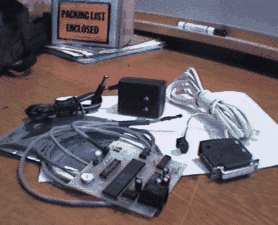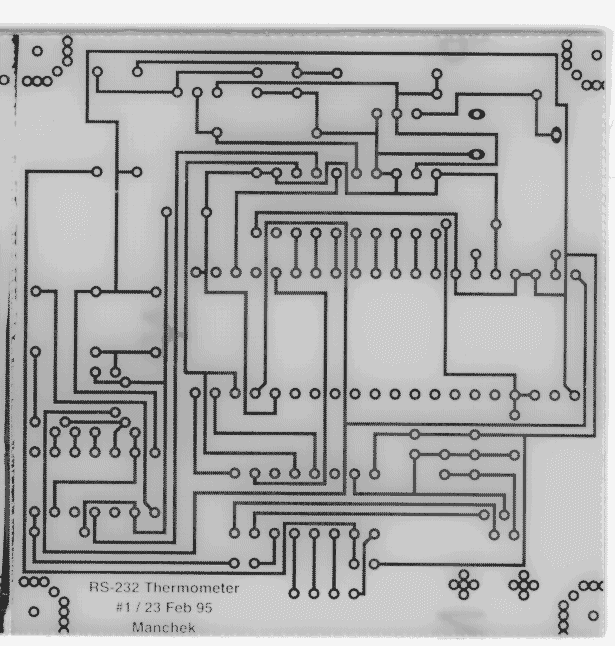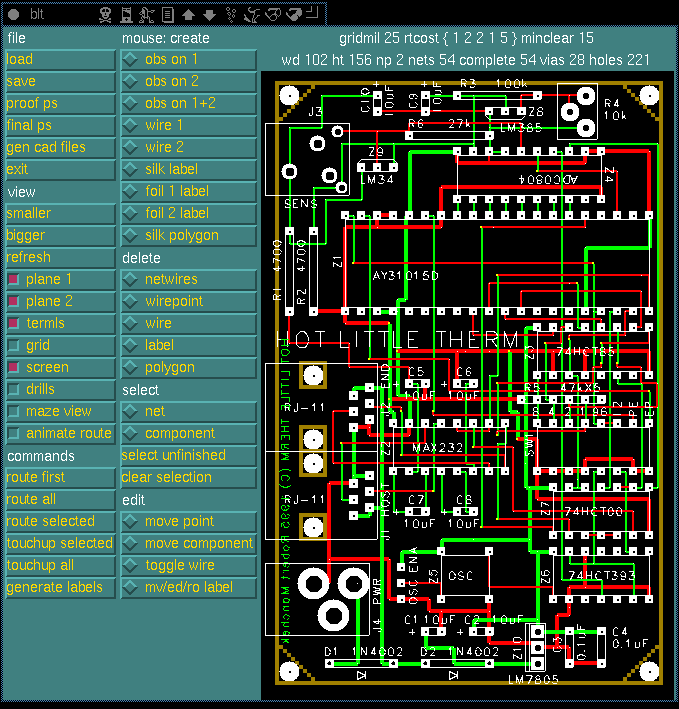

It's not my idea. It's not the first one that I've built. But hey, I was really bored. Reed drew the picture.
The serial port is read by a program called therm that you can connect to with telnet or gopher . There are others. And, every 15 minutes a cron job reads the temp and adds it to a file, with a timestamp. Another program, thermgif, tails that file and honks up a GIF, like this,
that you can get from gopher://therm.netlib.org:4511/g. I have an identical-looking X-widgy floating around on my screen that updates once in a while.
I can tell you what the sum of the temperatures above 50F for all the months with an 'R' was. How's that for a public school math question? Or an Oracle whiz?

The most interesting part was trying to keep the technology level as low as possible, and finding stuff like a neat little 2.4576MHz CMOS osc package, and making the voltage reference double as the zero offset, for a wider output range. I was kind of happy about the board, which I routed on a homemade maze router that I hacked up to deal with jumpers so I could make single-sided board out of it. The router scribbled out PostScript (TM), which I printed on a nice laser and took to the local blueprint guys for a 50% reduction on to Kodalith film. This way, we could contact UV-print and etch as many boards as we could stand to drill (about one so far). The board looked like this:


Like last time, the router got the better part of the deal. It can now handle different pad sizes and shapes, trace widths and labels, and spits out Postscript or Gerber. And I wrote a Gerber to Postscript translator in the process of figuring out the Gerber format. Well it got to be time to order parts and we thought about it some more, and decided that this was really not a good idea. The price of the UART (from the only distributor) just went up from $5.95 to $9.95. Not a good sign. Also, the most recent date code I've ever seen on one of these is ~1986. Ah, at least it was a step up from latching relays and commutators.